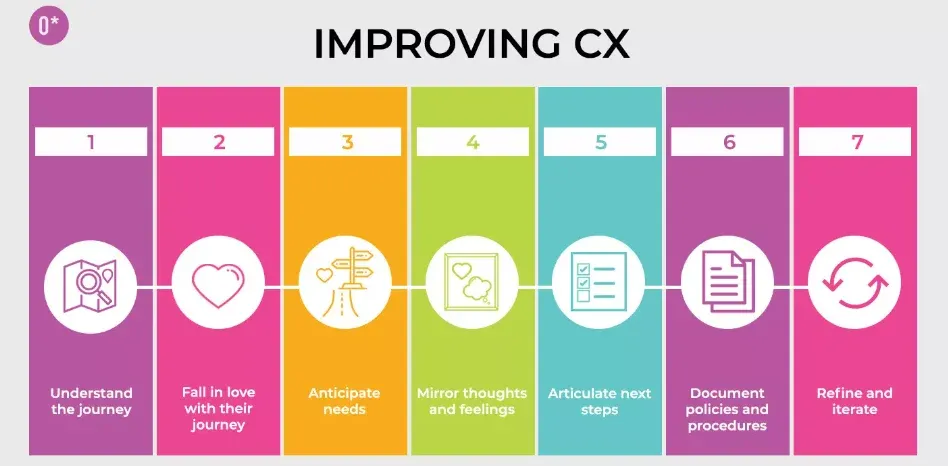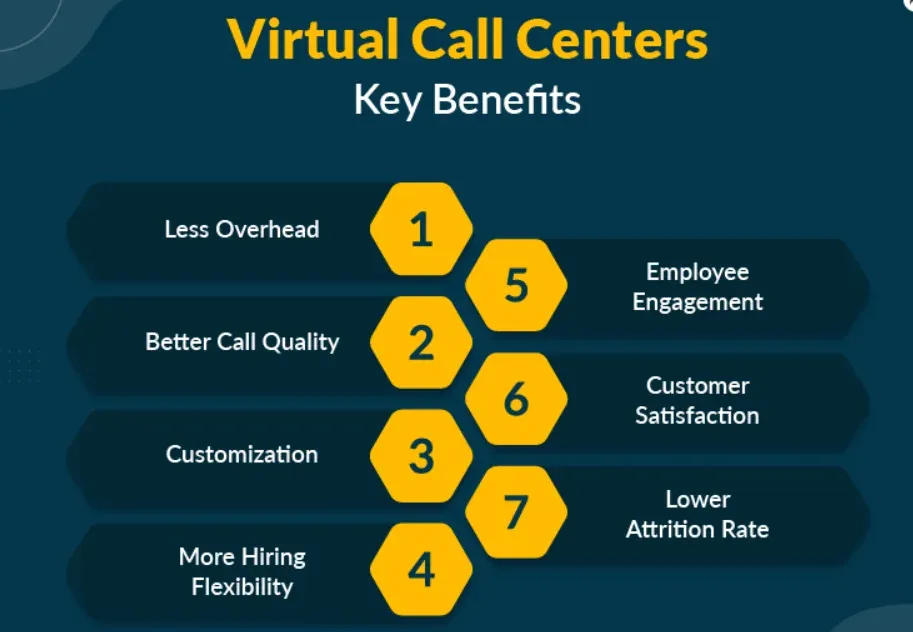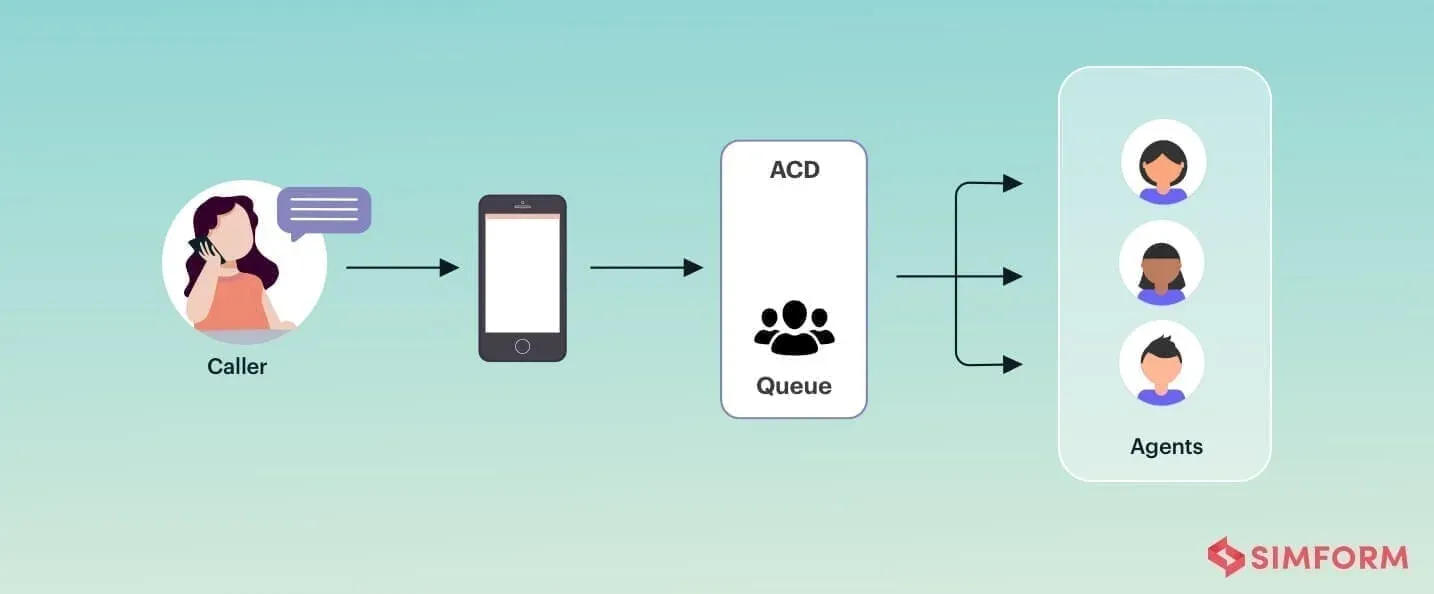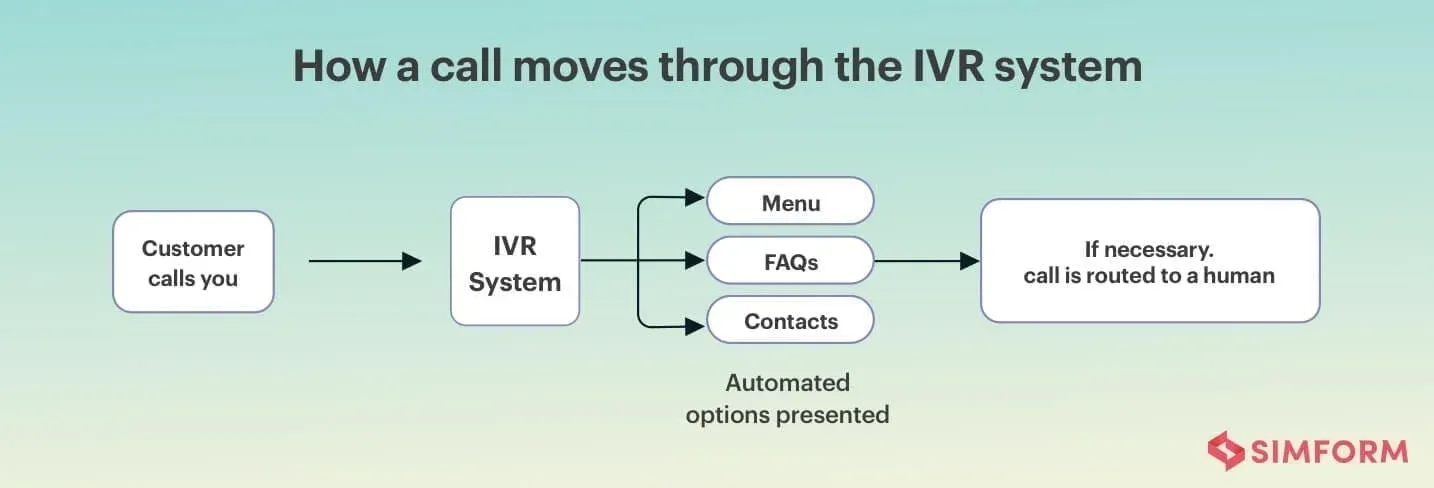Introduction
Are you tired of facing customer service challenges with old-school call centers? Finding it tough to keep up with the fast-changing technology?
Meet Virtual call centers.
Thankfully, customer service is improving, and virtual call centers are right at the center of it.
This exciting way of connecting with customers is more user-friendly, fast, and efficient. But how can this change the game for your business?
In this blog post, we'll explain the role virtual call centers play in shaping the future of customer service.
So, let's dive in and ensure you're up to speed with the latest in customer care solutions.
What are Virtual Call Centers?
A virtual call center is a platform that allows customer service agents to work remotely from different locations, such as their homes or regional offices, and interact with customers via phone calls or other channels.
Virtual call center software enables agents to connect to a cloud-based system with the necessary tools and features to handle customer inquiries and issues.
Some of the benefits of virtual call centers are lower operational costs, higher agent satisfaction, and greater flexibility and scalability

Why are Virtual Call Centers the Future?
In this section, we'll cover why virtual call centers are seen as the future of customer service operations and global business communication.
Increased Flexibility and Scalability
Virtual call centers offer businesses unparalleled flexibility. They allow customer service representatives to work from any location, leading to an expanded talent pool and 24/7 availability if desired. Plus, the virtual model can easily scale up or down according to business needs.
Cost Effective
Operating a virtual call center eliminates the necessity of maintaining physical call center facilities, resulting in significant overhead costs savings.
Funds can be re-allocated towards improving customer service, training staff, or other facets of the business.
Improved Customer Experience
Virtual call centers offer features like advanced routing, which directs customers to the most appropriate agent irrespective of their geographical location.
This enhances the customer experience by reducing wait times and improving the quality of service.

Advanced Technology and Integration
Virtual call centers effectively leverage advanced technology, such as AI, to automate routine tasks and improve service quality.
Furthermore, virtual call centers typically integrate seamlessly with your existing CRM or sales software, facilitating unified communication within the organization.
Continuity of Service
With a virtual call center, your service remains uninterrupted, regardless of local disruptions or crises.
Your business can continue to function in the face of circumstances that could impact a traditional call center, like natural disasters or public health emergencies.
Embracing Remote Work Culture
As businesses worldwide embrace remote work, virtual call centers align with this shift.
They offer employees the flexibility to work from anywhere, impacting positively on job satisfaction and productivity.
Virtual call centers are undoubtedly becoming the future of customer service. They offer a combination of cost-effectiveness, technological advancement, and flexibility, positioning themselves as a fundamental component in the evolution of global business communications.
Who Benefits from Virtual Call Centers?
In this section, we'll cover the various industries and stakeholders that can benefit significantly from utilizing virtual call centers in their businesses.

Small and Medium-sized Businesses
Virtual call centers are an excellent fit for small and medium-sized businesses, as they help reduce costs by eliminating the need for substantial upfront investments.
Companies can make use of virtual agents and flexible pricing models, making it a cost-effective solution to scale up customer service operations.
Large Enterprises
Large organizations can benefit from virtual call centers by seamlessly managing high call volumes, which can be spread across multiple locations and time zones.
The flexibility of virtual call center technology allows for better resource allocation and enhanced customer service.
Remote Workers
Virtual call centers enable remote work, which is a major advantage for employees seeking flexibility.
Remote agents can enjoy better work-life balance and reduced commute time, ultimately leading to increased job satisfaction and productivity.
Customer Support Teams
Customer support teams can benefit from virtual call centers, as they provide tools to enhance the overall customer experience.
Advanced features such as intelligent call routing and omnichannel support ensure that the right agents attend to customers, making the customer support process smoother and more efficient.
Suggested Reading:How a Customer Support Bot Can Revolutionize Your Business
Sales Teams
Sales teams can leverage virtual call centers to improve their outbound calling strategies.
With features like predictive dialers and call analytics, sales teams can target leads more effectively and close deals faster.
Business Continuity Planning
Virtual call centers help businesses maintain their operations during unforeseen circumstances (e.g., natural disasters, pandemics).
Since they can be established and maintained remotely, virtual call centers enable businesses to continue providing customer service uninterruptedly.

How do you set up a virtual call center?
Now that we've seen who benefits from virtual call centers let's dive into setting up a virtual call center.
Building a virtual call center requires careful planning and consideration. Here are the key steps involved:
In this section, we'll explain how to set up a virtual call center to bring your customer support service to the next level and enhance your business operations.
Determine Your Needs and Requirements
The first step in setting up a virtual call center involves identifying your specific needs. What features are you looking for? How many agents will be using the system?
What type of customer interactions do you handle? Answering these questions can help you figure out what kind of call center you need.
Choose the Right Virtual Call Center Software
Once you know your requirements, it's time to choose the right call center software. Look at different vendors, comparing their features, pricing, and customer reviews. The software should be easy to use, reliable, and offer the features that your business requires.
Suggested Reading:Is a Virtual Call Center Right for Your Business?
Get the Right Equipment
While you don't need a physical space or expensive infrastructure for a virtual call center, you still require some basic equipment.
This typically includes a computer, reliable high-speed internet, and a quality headset. Ensure all remote agents also have access to these essentials.
Train Your Team
Introducing new technology requires proper training. Make sure your team understands how to use the virtual call center software.
Training should cover not only the technical aspects of the software but also expectations and best practices for working in a virtual setting.
Configure Your Settings
With your team ready to go, configure your virtual call center to match your business operations.
This might involve setting up call queues, writing scripts for agents, and determining routing rules for incoming calls.
Monitor and Improve
Once your virtual call center is up and running, continuously assess its performance.
You'll be able to gather valuable insights from analytics provided by the software, which can help you make necessary adjustments and improvements over time.
Setting up a virtual call center can be a game-changer for businesses. With the right planning, software, and team, you can provide top-tier customer service over the phone, regardless of where you or your team members are located.
Challenges and Solutions in Virtual Call Centers
While virtual call centers offer numerous benefits but have their fair share of challenges, let's explore some common hurdles businesses face and the innovative solutions that can help overcome them.

Challenge of Management and Oversight
One of the major challenges facing virtual call centers is the lack of direct, in-person management and oversight. This can lead to issues with performance, productivity, and quality control.
Solution: The use of advanced monitoring tools and task management software can help supervisors monitor agent performance, track productivity, and ensure quality standards are met.
Maintaining Customer Data Security
Virtual call centers need to be even more vigilant about securing sensitive customer information since remote work can open up new potential vulnerabilities.
Solution: Establishing strong cybersecurity protocols, utilizing encrypted connections, and conducting regular security training can mitigate this risk.
Technical Issues
Virtual call center agents can face technical issues that hamper their productivity or customer experience. These might include poor internet connection, hardware malfunctions, or software glitches.
Solution: Providing technical support for agents and investing in reliable hardware and software solutions can address these challenges.
Communication Breakdown
Without face-to-face interaction, virtual call center teams can experience communication breakdowns, leading to misunderstandings and a lack of cohesion.
Solution: Implementing effective communication platforms and holding regular virtual team meetings can foster better communication.
Maintaining Consistent Training and Development
In a virtual environment, it can be challenging to provide consistent training and development opportunities for call center agents.
Solution: Using online training modules and virtual workshops can ensure that agents continue to evolve their skills and enhance their performance.
Ensuring Work-Life Balance
For remote call center agents, maintaining a healthy work-life balance can be challenging. Without clear boundaries between work and personal life, agents can experience burnout.
Solution: Encouraging regular breaks, setting clear work hours, and promoting a healthy work-life balance can help counter this issue.
Conclusion
Virtual call centers are changing the scene of businesses and customer service. They offer cost-efficiency, excellent customer experiences, and access to a global talent pool.
However, to harness these benefits, businesses need the correct tools and setup.
Overcoming challenges like quality assurance, agent collaboration and security are crucial. Here's where BotPenguin shines.
The combination of AI, advanced analytics, and omnichannel experiences are reshaping customer service. With BotPenguin, you can bring this future to you.
BotPenguin makes the setup and management of your virtual call center effortless and efficient. This AI-powered chatbot platform is not just another tool at your disposal; it's a smart partner that revolutionizes customer support.
Whether it's marketing automation, lead generation, appointment bookings, or providing real-time customer service, BotPenguin excels at it all.
It allows you to integrate popular messaging platforms such as WhatsApp, Facebook Messenger, and Telegram, bringing all your communication channels under one platform.
Knowing customers' support needs vary, BotPenguin can handle diverse industries, from e-commerce to healthcare, education, real estate, and more.
Its robust analytics and insights offer valuable metrics to track and optimize your customer service performance continually.
Moreover, BotPenguin is designed with user experience as its focus.
Sign up today on BotPenguin and experience the difference, no credit required. You can go on free, even forever :)
Frequently Asked Questions (FAQs)
How do virtual call centers improve customer service?
Virtual call centers offer advantages like round-the-clock availability, access to diverse talent pools, reduced wait times, and personalized customer interactions.
These benefits lead to enhanced customer satisfaction and loyalty.
Are virtual call centers as effective as traditional call centers?
Virtual call centers can be just as effective, if not more. Cloud-based technology enables seamless collaboration, performance tracking, and efficient customer interactions.
Proper training and support ensure high-quality service delivery.
How to ensure data security in virtual call centers?
To ensure data security, virtual call centers implement encryption protocols, secure connections, and restricted access to customer information.
Regular audits, training, and compliance with industry standards are also essential in maintaining data security.
What are the challenges of running a virtual call center?
Common challenges include managing remote teams, maintaining consistent service levels, ensuring reliable internet connections, and effective communication.
Proper training, clear processes, and robust technology infrastructure help address these challenges effectively.



